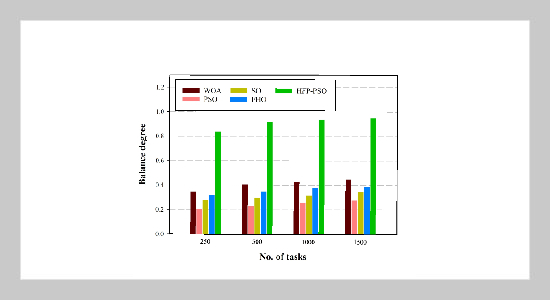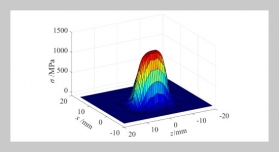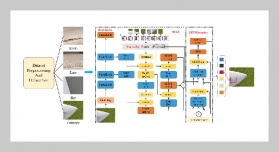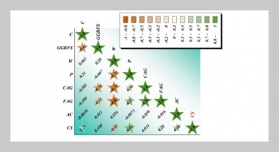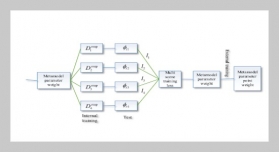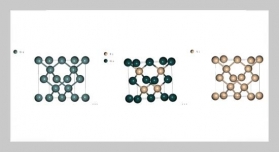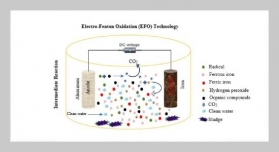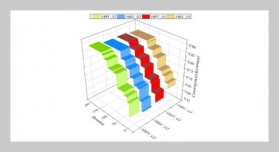School of Artificial Intelligence, Jiaozuo University, Jiaozuo 454000, Henan, China
Received:
February 6, 2025
Accepted:
March 17, 2025
Publication Date:
March 28, 2025
Copyright The Author(s). This is an open access article distributed under the terms of the Creative Commons Attribution License (CC BY 4.0), which permits unrestricted use, distribution, and reproduction in any medium, provided the original author and source are cited.
Download Citation: ||https://doi.org/10.6180/jase.202512_28(12).0006
Cloud computing delivers on-demand services and scalable computing power in near real-time, redefining modern computing paradigms. Effective task scheduling remains a critical challenge due to dynamic and heterogeneous workloads, directly influencing energy efficiency, response time, and resource utilization. The present research presents an enhanced Particle Swarm Optimization (PSO) algorithm inspired by specific hummingbird flight characteristics, chosen for their exceptional agility and efficiency. Five hummingbird inspired concepts are integrated into PSO: incremental position updates to enhance convergence accuracy, stepwise position changes to avoid local optima, energy-conserving movements reducing computational overhead, decentralized exploration to maintain diversity, and multidirectional searches enhancing solution coverage. Comparative experiments conducted on synthetic and real-world datasets (HPC2N) with diverse task loads demonstrate measurable performance improvements, including up to 18% better resource utilization, up to a 35% decrease in imbalance degree, and up to a 20% improvement in execution cost compared to recent algorithms. These results confirm that each hummingbird-inspired concept distinctly contributes to overcoming conventional PSO limitations, significantly enhancing exploration ability, convergence speed, load balancing, and adaptability to diverse cloud computing scenarios.
Keywords:
Optimization; Task scheduling; Cloud computing; Hummingbird flight
- [1] A.Tomar, R.R.Kumar, and I.Gupta,(2023)“Decision making for cloud service selection: a novel and hybrid MCDM approach" Cluster Computing 26(6): 3869 3887. DOI: 10.1007/s10586-022-03793-y.
- [2] A.Vakili, H. M. R. Al-Khafaji, M. Darbandi, A. Heidari, N. Jafari Navimipour, and M. Unal, (2024) “A new service composition method in the cloud-based inter net of things environment using a grey wolf optimization algorithm and MapReduce framework" Concurrency and Computation: Practice and Experience 36(16): e8091. DOI: 10.1002/cpe.8091.
- [3] M. Shariq, M. Conti, K. Singh, C. Lal, A. K. Das, S. A. Chaudhry, and M. Masud, (2024) “Anonymous and reliable ultralightweight RFID-enabled authentication scheme for IoT systems in cloud computing" Com puter Networks 252: 110678. DOI: 10.1016/j.comnet.2024.110678.
- [4] A. Azadi and M. Momayez, (2024) “Review on Constitutive Model for Simulation of Weak Rock Mass" Geotechnics 4(3): 872–892. DOI: 10.3390/geotechnics4030045.
- [5] A.Heidari, Z. Amiri, M. A. J. Jamali, and N. J. Nav imipour, (2025) “Enhancing Solar Convection Analysis With Multi-Core Processors and GPUs" Engineering Reports 7(1): e13050. DOI: 10.1002/eng2.13050.
- [6] A. Heidari, H. Shishehlou, M. Darbandi, N. J. Nav imipour, and S. Yalcin, (2024) “A reliable method for data aggregation on the industrial internet of things using a hybrid optimization algorithm and density correlation degree" Cluster Computing 27(6): 7521–7539. DOI: 10.1007/s10586-024-04351-4.
- [7] V. Hayyolalam, B. Pourghebleh, M. R. Chehrehzad, and A. A. Pourhaji Kazem, (2022) “Single-objective service composition methods in cloud manufacturing sys tems: Recent techniques, classification, and future trends" Concurrency and Computation: Practice and Expe rience 34(5): e6698. DOI: 10.1002/cpe.6698.
- [8] E. Khezri, R. O. Yahya, H. Hassanzadeh, M. Mohaidat, S. Ahmadi, and M. Trik, (2024) “DLJSF: Data Locality Aware Job Scheduling IoT tasks in fog-cloud computing environments" Results in Engineering 21: 101780. DOI: 10.1016/j.rineng.2024.101780.
- [9] H.Wu,(2024) “Black widow optimization algorithm for efficient task assignment in cloud computing" Journal of Engineering and Applied Science 71(1): 139. DOI: 10.1186/s44147-024-00471-1.
- [10] V. Hayyolalam, B. Pourghebleh, A. A. Pourhaji Kazem, and A. Ghaffari, (2019) “Exploring the state of-the-art service composition approaches in cloud manu facturing systems to enhance upcoming techniques" The International Journal of Advanced Manufacturing Technology 105: 471–498. DOI: 10.1007/s00170-019 04213-z.
- [11] A. Badshah, A. Ghani, A. Irshad, H. Naqvi, and S. Kumari, (2021) “Smart workload migration on external cloud service providers to minimize delay, running time, and transfer cost" International Journal of Communi cation Systems 34(3): e4686. DOI: 10.1002/dac.4686.
- [12] V. Mohammadian, N. J. Navimipour, M. Hossein zadeh, and A. Darwesh, (2021) “Fault-tolerant load balancing in cloud computing: A systematic literature review" IEEE Access 10: 12714–12731. DOI: 10.1109/ACCESS.2021.3139730.
- [13] Z. Amiri, A. Heidari, M. Zavvar, N. J. Navimipour, and M.Esmaeilpour, (2024) “The applications of nature inspired algorithms in Internet of Things-based healthcare service: A systematic literature review" Transactions on Emerging Telecommunications Technologies 35(6): e4969. DOI: 10.1002/ett.4969.
- [14] K. Zanbouri, M. Darbandi, M. Nassr, A. Heidari, N. J. Navimipour, and S. Yalcın, (2024) “A GSO-based multi-objective technique for performance optimization of blockchain-based industrial Internet of things" Interna tional Journal of Communication Systems 37(15): e5886. DOI: 10.1002/dac.5886.
- [15] M. Sanaj and P. J. Prathap, (2020) “Nature inspired chaotic squirrel search algorithm (CSSA) for multi objective task scheduling in an IAAS cloud computing at mosphere" Engineering Science and Technology, an International Journal 23(4): 891–902. DOI: 10.1016/j.jestch.2019.11.002.
- [16] M.Tanha, M. Hosseini Shirvani, and A. M. Rahmani, (2021) “A hybrid meta-heuristic task scheduling algorithm based on genetic and thermodynamic simulated an nealing algorithms in cloud computing environments" Neural Computing and Applications 33: 16951–16984. DOI: 10.1007/s00521-021-06289-9.
- [17] S. A. Alsaidy, A. D. Abbood, and M. A. Sahib, (2022) “Heuristic initialization of PSO task scheduling algorithm in cloud computing" Journal of King Saud University Computer and Information Sciences 34(6): 2370–2382. DOI: 10.1016/j.jksuci.2020.11.002.
- [18] P. Pirozmand, H. Jalalinejad, A. A. R. Hosseinabadi, S. Mirkamali, and Y. Li, (2023) “An improved parti cle swarm optimization algorithm for task scheduling in cloud computing" Journal of Ambient Intelligence and Humanized Computing 14(4): 4313–4327. DOI: 10.1007/s12652-023-04541-9.
- [19] S. Mangalampalli, G. R. Karri, and M. Kumar, (2023) “Multi objective task scheduling algorithm in cloud com puting using grey wolf optimization" Cluster Computing 26(6): 3803–3822. DOI: 10.1007/s10586-022-03786-x.
- [20] L. Abualigah, A. M. Hussein, M. H. Almomani, R. A. Zitar, H. Migdady, A. I. Alzahrani, and A. Alwadain, (2024) “Improved synergistic swarm optimization algo rithm to optimize task scheduling problems in cloud com puting" Sustainable Computing: Informatics and Systems 43: 101012. DOI: 10.1016/j.suscom.2024.101012.
- [21] G. Senthilkumar, B. Suvarnamukhi, S. Lekashri, and M. Mohammed Thaha,(2024) “Effective task scheduling based on interactive autodidactic school algorithm for cloud computing" AAutomatika: ˇcasopisza automatiku, mjerenje, elektroniku, raˇcunarstvoi komunikacije 65(1): 159–166. DOI: 10.1080/00051144.2023.2288484.
- [22] A. Daghayeghi and M. Nickray, (2024) “Delay aware and energy-efficient task scheduling using strength pareto evolutionary algorithm II in Fog-Cloud Computing paradigm" Wireless Personal Communications 138(1): 409–457. DOI: 10.1007/s11277-024-11510-8.
- [23] S. Mirjalili and A. Lewis, (2016) “The whale optimiza tion algorithm" Advances in engineering software 95: 51–67. DOI: 10.1016/j.advengsoft.2016.01.008.
- [24] F. A. Hashim and A. G. Hussien, (2022) “Snake Optimizer: A novel meta-heuristic optimization algorithm" Knowledge-Based Systems 242: 108320. DOI: 10.1016/j.knosys.2022.108320.
- [25] M. Azizi, S. Talatahari, and A. H. Gandomi, (2023) “Fire Hawk Optimizer: A novel metaheuristic algorithm" Artificial Intelligence Review 56(1): 287–363. DOI: 10.1007/s10462-022-10173-w.


